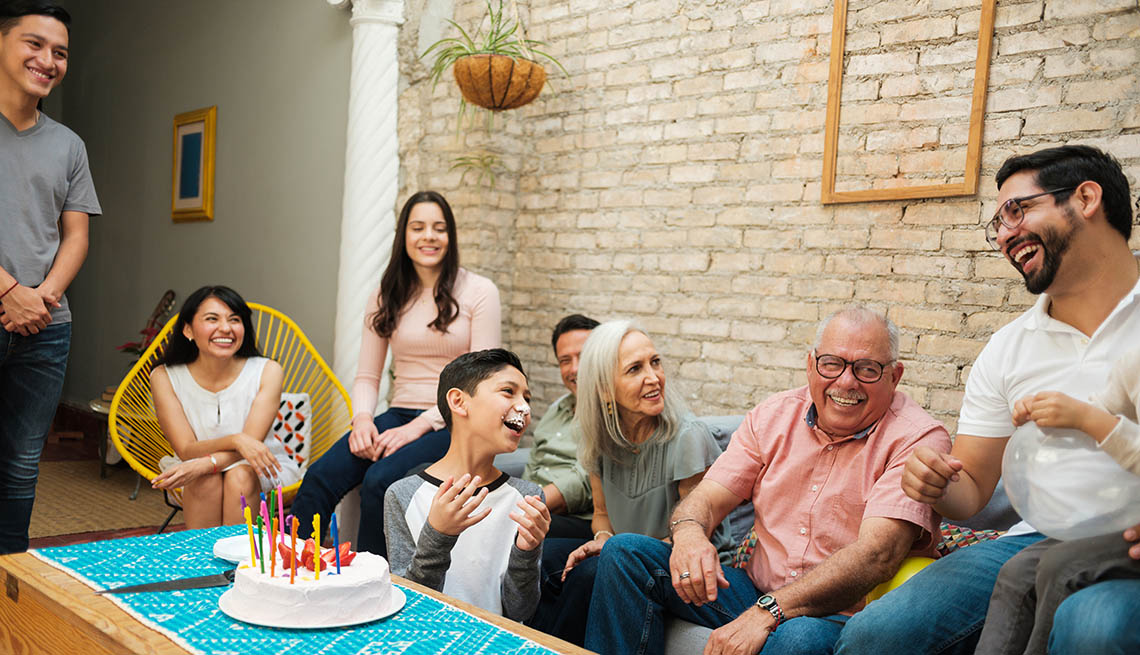3 Ways To Stay Connected When You Have Hearing Loss
Communication is key to maintaining your relationships
Easy back-and-forth conversation is the foundation of connection and intimacy, whether it’s countless everyday interactions with a spouse, catching up with grandkids, or sharing news with friends over dinner, So, it’s not surprising research1 shows communication challenges faced by people with hearing loss put them at risk of loneliness, loss of companionship, and social isolation. But if you do have hearing loss, there are easy ways to stay connected.
Keep getting out there
You don’t have to stop seeing people socially, but you’ll want to modify those get-togethers so you can have more productive conversations. For starters, be upfront about your hearing loss. You’ll likely discover you’re not alone. Nearly 38 million American adults2 have some degree of hearing loss, so your dinner companion might be more than happy to meet you in a quiet restaurant before the crowds show up.
At parties, be open about asking the person you’re conversing with if you can move to a less noisy corner. Focus on one person at a time rather than trying to maintain a conversation with four or five people. You might also want to bring a personal sound amplification product, or PSAP, with you to gatherings where the noise level could be a little loud. These ready-to-wear electronic devices are designed for people whose hearing loss isn’t severe enough for a hearing aid, but who can still use a boost in noisy settings.
Get out the pen
Writing letters and sending cards may seem old-fashioned these days, but getting real mail is a lot more exciting than receiving a text. Your grandkids will love having you as a pen pal. This holiday season, consider giving them a stack of postcards or personal stationery that’s stamped and addressed to you so they can send you back notes easily.
Tap into technology
New ways of communicating have become vital for everyone during the pandemic. Social media and video chats – with the option of turning up the volume – are two ways we’ve all learned to stay in touch. Catching up over the phone can be hard if you are experiencing some hearing loss, but there are options.
A device such as CaptionCall makes staying in touch by phone seamless. It allows you to hear your caller’s voice while simultaneously displaying large, easy-to-read text that automatically scrolls during your conversation. Plus, CaptionCall has a mobile app that allows you to make and receive calls with captions on your smartphone or tablet.
Hearing loss doesn’t have to mean the end of easy communication with the people in your life. Several tools are available to help you improve your hearing, maintain your independence and keep your relationships flourishing. CaptionCall is one of the technology innovations that helps you live your fullest life.
CaptionCall is the tech solution you can order today, no matter what kind of budget you’re on. The CaptionCall Service is available at no cost if you have hearing loss and need captions to use the phone effectively. CaptionCall is federally funded as part of Title IV of the Americans with Disabilities Act (ADA)3. And complimentary Red Carpet Service means delivery, installation, personalized training and support are all free.
Order CaptionCall – at no cost – so you can stay in touch easily.
CaptionCall is available in the United States ONLY. FEDERAL LAW PROHIBITS ANYONE BUT REGISTERED USERS WITH HEARING LOSS FROM USING INTERNET PROTOCOL (IP) CAPTIONED TELEPHONES WITH THE CAPTIONS TURNED ON. IP captioned telephone service may use a live operator. The operator generates captions of what the other party to the call says. These captions are then sent to your phone. There is a cost for each minute of captions generated, paid from a federally administered fund. No costs are passed along to individuals who qualify for the service. The CaptionCall phone remains property of CaptionCall in order to provide ongoing support, service, and upgrades.
2 https://www.nidcd.nih.gov/health/hearing-ear-infections-deafness/adult-hearing-health-care
3 https://captioncall.com/support/faqs





